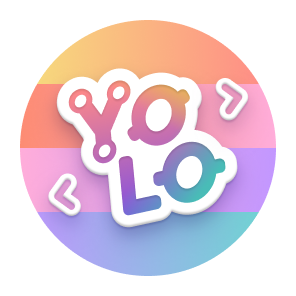A example of a Vercel-deployable project with a Next.js frontend and a Sanity Studio on /studio
Clone this repository from your GitHub or Click Use this template.
- If you don't have the Sanity CLI installed, first run
npm install -g @sanity/clito install it globally npm install && sanity initin the/studiofolder- During Sanity's initalization it will warn you, type
Yand hitenter:
? The current folder contains a configured Sanity studio. Would you like to reconfigure it? (Y/n)
- When it asks you what dataset configuration to use, go with the
default - Add CORS Origins to your newly created Sanity project (visit: manage.sanity.io and go to Settings > API): - Add your Studio URLs with credentials:
http://localhost:3333and[subdomain].sanity.studio- Add your front-end URLs without credentials:http://localhost:3000andhttps://[subdomain].vercel.app⚠️ Important!
For "singleton" documents, like settings sections, the schema uses a combination of__experimental_actionsand the new actions resolver. If you are using this outside of the official Sanity Starter, you will need to comment out the__experimental_actionsline in "singleton" schemas to publish settings for the first time. This is because a singleton is still a document type, and one needs to exist first before it can be edited. Additionally, if you want to create additional "singleton" schemas, be sure to edit thesingletonsarray in the following file:/studio/parts/resolve-actions.js.
npm installin the project root folder on local- Create an
.env.localfile in the project folder, and add the following variables:
NEXT_PUBLIC_SANITY_PROJECT_DATASET=production
NEXT_PUBLIC_SANITY_PROJECT_ID=XXXXXX
NEXT_PUBLIC_SANITY_API_TOKEN=XXXXXX
// Needed for Klaviyo forms:
KLAVIYO_API_KEY=XXXXXX
// Needed for Mailchimp forms:
MAILCHIMP_API_KEY=XXXXXX-usX
MAILCHIMP_SERVER=usX
// Needed for SendGrid forms:
SENDGRID_API_KEY=XXXXXX
- Update all the
XXXXXXvalues, here's where to find each:
SANITY_PROJECT_ID- You can grab this after you've initalized Sanity, either from thestudio/sanity.jsonfile, or from your Sanity Manage dashboardSANITY_API_TOKEN- Generate an API token for your Sanity project. Access your project from the Sanity Manage dashboard, and navigate to: "Settings" -> "API" -> "Add New Token" button. Make sure you giveread + writeaccess!KLAVIYO_API_KEY- Create a Private API Key from your Klaviyo Account "Settings" -> "API Keys"MAILCHIMP_API_KEY- Create an API key from "Account -> "Extras" -> API KeysMAILCHIMP_SERVER- This is the server your account is from. It's in the URL when logged in and at the end of your API KeySENDGRID_API_KEY- Create an API key from "Settings" -> "API Keys" with "Restricted Access" to only "Mail Send"
npm run dev in the project folder to start the front end locally
-
Your front end should be running on http://localhost:3000
-
Your Sanity Studio should be running on http://localhost:3333
⚠️ Gotcha!
If you did not manually set up your project, theprojectIdin/studio/sanity.jsonwill still be set to the starter-next-js-sanity demo project. Make sure to update this before starting the studio, otherwise you will be denied access when trying to access your studio.
To learn more about Next.js, take a look at the following resources:
- Next.js Documentation - learn about Next.js features and API.
- Learn Next.js - an interactive Next.js tutorial.
You can check out the Next.js GitHub repository - your feedback and contributions are welcome!
This is setup to work seamlessly with Vercel, which I highly recommend as your hosting provider of choice. Simply follow the on-screen instructions to setup your new project, and be sure to add the same .env.local variables to your Vercel Project
Check out our Next.js deployment documentation for more details.
This is an easy one, you can simply run sanity deploy from the /studio folder in your project. Select a subdomain you want; your Studio is now accessible from the web. This is where I'll invite the client to manage the project so they can both add billing info and begin editing content.
Error: Failed to communicate with the Sanity API
If you get this error in your CLI, you need to logout and log back in again. Simply do sanity logout and then sanity login to fix.
How can I see the bundle size of my website?
Simply run npm run analyze from the project folder. This will run a build of your site and automatically open the Webpack Bundle Analyzer visuals for your site's build files.

